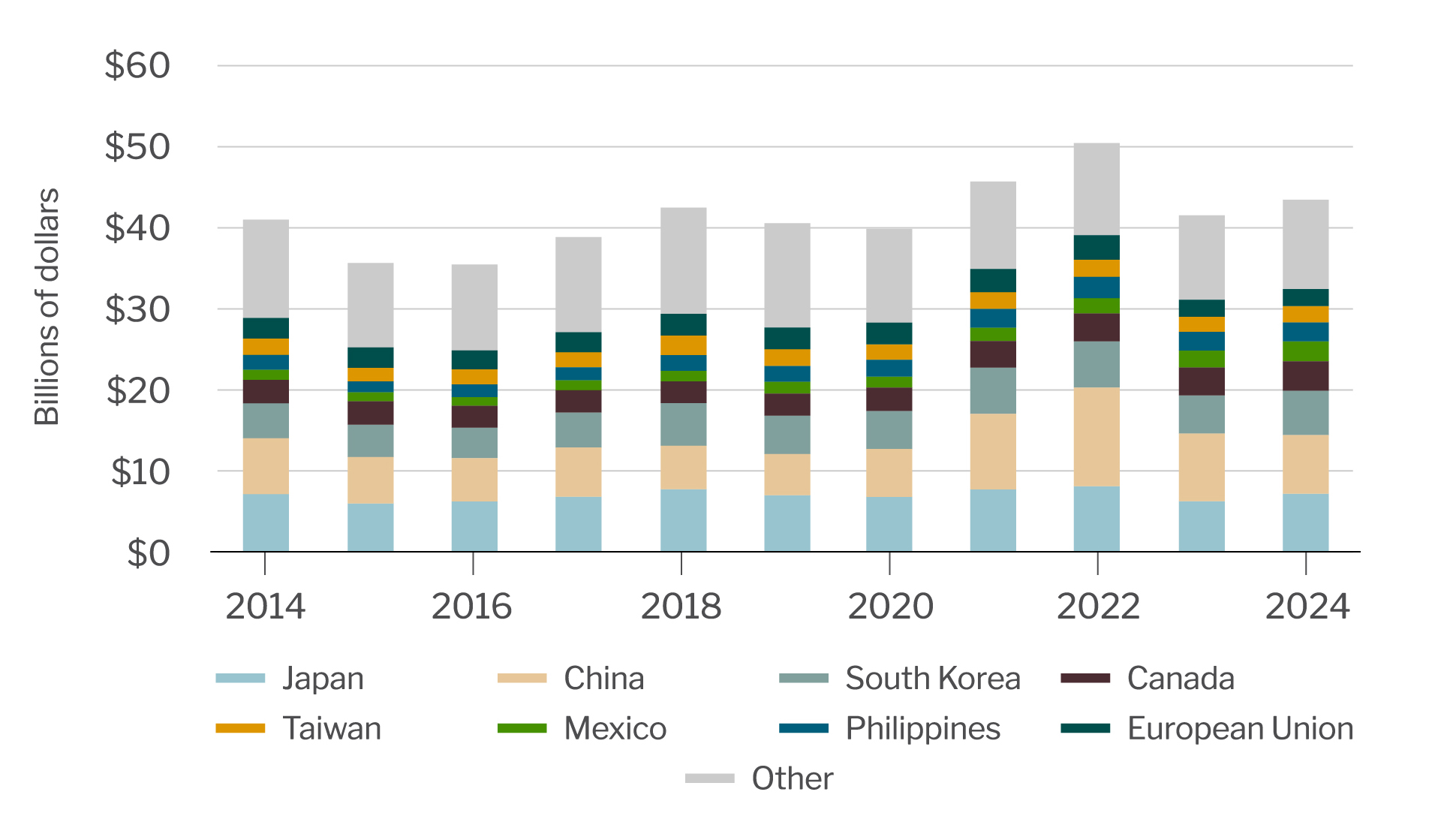Tariffs and their impact to agricultural exporters
Businesses and consumers are wondering to what degree the Trump administration will apply tariffs on trade partners and how that could impact the cost of goods and general health of the economy. U.S. agriculture producers with a strong emphasis on exports wonder if retaliatory tariffs could impact their bottom line.
Background on tariffs
Tariffs, or taxes paid on imports, have always been a policy tool of the United States and represented the primary source of income for the federal government until the early 1900s when the income tax was established. Some argue tariffs are good as they protect domestic producers, while others counter that they raise the cost of living and lead to retaliatory tariffs against U.S. exports. Both arguments have merit.
Trump administration’s tariff strategy
The Trump administration is likely to apply tariffs against countries considered to be manufacturing competitors, countries perceived to be unfairly benefiting from U.S. military / economic policy, and/or countries responsible for the inflow of illegal immigration and drugs. This may include any one of the primary export markets for Western agriculture producers (see chart below), but China is likely top on the list, followed by the European Union. Canada and Mexico may also be targeted; however, North American trade policy is set by the United States-Mexico-Canada Agreement (USMCA), which won’t be up for renewal until 2026.
Risk to agriculture producers in the West
Nearly $60 billion in agriculture goods was exported out of West Coast ports in 2023. As such, retaliatory tariffs could have far reaching impacts. For instance, in response to tariffs placed on steel and aluminum, India applied retaliatory tariffs against almonds, apples, chickpeas, lentils and walnuts between 2019 and 2023. Based on Census Bureau trade data, this likely resulted in an estimated $600 million loss to West Coast agriculture producers.
Season-to-date agriculture exports out of West Coast ports, by value and country 
Source: USDA Foreign Agriculture Service GATS Trade Database.
Looking to the future
The degree to which the Trump administration applies tariffs is uncertain due to a number of factors:
- While trade restrictions on agriculture imports do occur, countries are less willing to apply them due to their potential impact on national security. For instance, agriculture exports from Russia were largely exempt from wide sweeping trade sanctions applied by the European Union and large economies in Asia.
- President Trump is likely using the threat of tariffs as a negotiation strategy. While he appears aggressive, he is likely to capitulate if trade partners address his concerns.
- The Trump administration faces competing priorities. Specifically, persistently high inflation levels may make it difficult to apply tariffs as they would result in a higher cost of living. Also, issues such as spiraling federal deficits and the push for deregulation may become more important and occupy a greater share of their agenda.
Return to Community Stories home page.